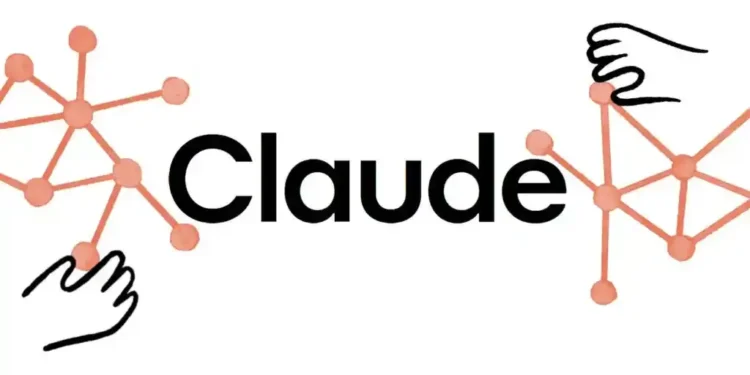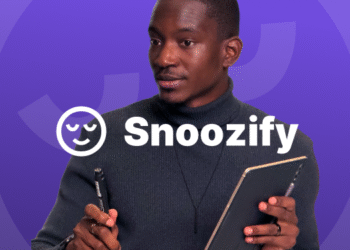The AI assistant in your pocket just learned a new trick, and it might be the most natural one yet. Anthropic’s Wednesday launch of voice capabilities for Claude marks more than just another feature update; it signals a fundamental shift in how we interact with artificial intelligence. As someone who’s spent countless hours typing queries to AI assistants, I couldn’t help but wonder: are we finally ready to have real conversations with our digital helpers?
The Voice Revolution Arrives for Claude Users
After months of watching OpenAI’s ChatGPT and Google’s Gemini Live dominate the voice AI space, Anthropic has entered the chat, literally. Claude’s new voice mode brings 10 distinct preset voices to the table, each carefully crafted to sound natural and engaging. But here’s what sets it apart: this isn’t just about adding speech to text. It’s about reimagining the entire interaction paradigm.
The rollout is refreshingly democratic. Whether you’re on iOS, Android, or hunched over your laptop, Claude’s voice mode is available to all users, free and paid alike. This universal access strategy stands in stark contrast to the often-tiered approaches we’ve seen from competitors, where voice features remain locked behind premium subscriptions.
Understanding Claude’s Voice Technology
What makes Claude’s implementation particularly interesting is its approach to natural conversation flow. Unlike early voice assistants that required rigid command structures, Claude’s voice mode supports interruptions, clarifications, and the kind of meandering conversations we have with human colleagues. Users can seamlessly switch between voice and text inputs, maintaining context across modalities. This feature sounds simple but requires sophisticated underlying architecture.
The 10 preset voices aren’t just random selections. Anthropic has clearly put thought into diversity and inclusivity, offering a range of tones, accents, and speaking styles. From professional and crisp to warm and conversational, each voice serves different use cases and user preferences. This variety acknowledges a simple truth: we don’t all want our AI assistants to sound like the same polished news anchor.
Real World Applications: Beyond the Novelty Factor
Let me paint you a picture of how this technology transforms daily workflows. Imagine you’re a content creator brainstorming video ideas while cooking dinner. Instead of stopping to type, you engage Claude in a natural back and forth about trending topics, audience preferences, and creative angles, all while your hands stay busy with meal prep. The custom instructions feature means Claude remembers your content niche, target audience, and preferred style without constant reminders.
For professionals, the implications run deeper. Software developers can now debug code through conversation, describing error patterns and receiving verbal explanations of solutions. Marketing teams can conduct verbal brainstorming sessions, with Claude serving as an always-available creative partner. Educational applications are particularly compelling: language learners can practice conversational skills, while students with dyslexia or visual impairments gain equal access to AI-powered learning tools.
The Competitive Landscape: How Claude Stacks Up
The voice AI market has become increasingly crowded, but not all implementations are created equal. ChatGPT’s voice mode, launched earlier this year, set the initial bar with its Advanced Voice Mode featuring real-time conversation capabilities. Google’s Gemini Live followed suit, integrating deeply with the Android ecosystem. So where does Claude fit in this landscape?
Feature by Feature Analysis
Response Quality: Claude’s strength has always been nuanced, thoughtful responses. This translates well to voice, where the assistant provides detailed explanations without the wall of text fatigue that can occur in written formats.
Integration: While ChatGPT offers deep integration with GPT 4’s capabilities and Gemini leverages Google’s ecosystem, Claude’s approach is platform-agnostic. This independence could be its secret weapon.
Customization: Claude’s custom instructions feature shines in voice mode, allowing for persistent personalization that feels more like training a personal assistant than configuring software.
Technical Limitations and the Road Ahead
Let’s address the elephant in the room: Claude’s voice mode isn’t perfect. Current limitations include:
- No Voice Cloning: Unlike some competitors exploring personalized voice synthesis, Claude sticks to preset options
- API Availability: Developers eagerly awaiting API access will need to wait until early 2025
- Language Support: Initial rollout focuses on major languages, with broader support planned
- Offline Functionality: Voice mode requires active internet connection, limiting use in connectivity-dead zones
Privacy and Ethical Considerations
In an era where every interaction generates data, Anthropic’s approach to voice data privacy deserves scrutiny. The company maintains that voice interactions receive the same privacy protections as text inputs, with no permanent voice recordings stored after processing. This stance, while reassuring, raises questions about quality improvement and model training.
The ethical implications extend beyond privacy. Voice AI’s ability to build parasocial relationships, where users develop emotional connections to their AI assistants, requires careful consideration. Anthropic’s decision to offer multiple voices rather than a single, branded personality suggests awareness of these concerns.
What This Means for the Future of AI Interaction
Claude’s voice mode launch represents more than a feature addition; it’s a glimpse into a future where AI assistants become true conversational partners. As these technologies mature, we’re moving from command-and-response interactions to genuine dialogue.
The implications ripple across industries:
- Healthcare: Voice-enabled AI could provide mental health support and medication reminders
- Education: Personalized tutoring becomes scalable through conversational AI
- Enterprise: Meeting transcription and analysis happen in real-time
- Creative Industries: Brainstorming and ideation become collaborative rather than solitary
Practical Tips for Getting Started
Ready to dive into Claude’s voice mode? Here’s how to make the most of it:
- Start with Clear Context: Begin conversations by stating your goal or topic
- Use Natural Language: Forget rigid commands; speak as you would to a colleague
- Leverage Custom Instructions: Set up your preferences, expertise level, and communication style
- Experiment with Voices: Different voices may suit different tasks, so find your preferences
- Combine Modalities: Switch between voice and text for optimal efficiency
The Bottom Line: A New Chapter in Human-AI Interaction
Anthropic’s launch of Claude voice mode isn’t just catching up to competitors; it’s pushing the conversation forward. By prioritizing natural interaction, accessibility, and user choice, Claude positions itself as the thinking person’s voice assistant.
The true test will come not from feature comparisons but from real-world adoption. Will users find Claude’s thoughtful responses worth potential latency trade-offs? Can Anthropic maintain its commitment to safety and privacy while delivering cutting-edge features? Time will tell, but one thing is certain: the age of conversational AI has truly arrived.
As we stand at this inflection point, the question isn’t whether voice will become the dominant mode of AI interaction; it’s how quickly we’ll adapt to this new reality. Claude’s voice mode offers a compelling vision of that future: one where AI assistants aren’t just tools but conversational partners in our daily lives.
Ready to experience the future of AI conversation? Claude’s voice mode is available now across all platforms. The conversation starts whenever you’re ready to speak.
This article was rewritten with the aid of AI
At Techsoma, we embrace AI and understand our role in providing context, driving narrative and changing culture.











